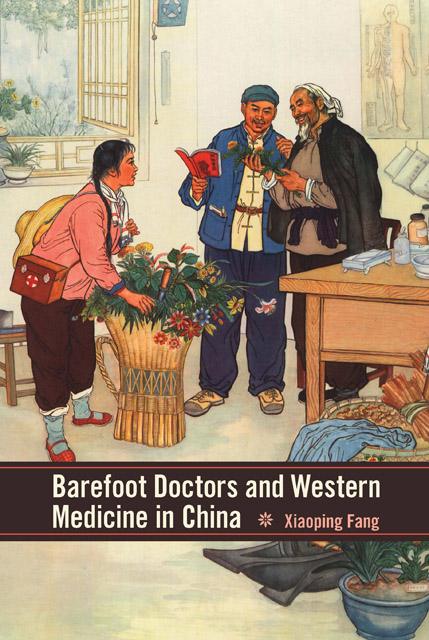Book contents
- Frontmatter
- Contents
- List of Illustrations
- Acknowledgments
- Maps
- Introduction
- 1 Village Healers, Medical Pluralism, and State Medicine
- 2 Revolutionizing Knowledge Transmission Structures
- 3 Pharmaceuticals Reach the Villages
- 4 Healing Styles and Medical Beliefs: The Consumption of Chinese and Western Medicines
- 5 Relocating Illness: The Shift from Home Bedside to Hospital Ward
- 6 Group Identity, Power Relationships, and Medical Legitimacy
- 7 Conclusion
- Appendix One The Organization of the Three-Tiered Medical System in Rural China, 1968–83
- Appendix Two Common Medicines in Chinese Villages during the 1960s–70s
- Abbreviations
- Glossary
- Notes
- Bibliography
- Index
- Frontmatter
- Contents
- List of Illustrations
- Acknowledgments
- Maps
- Introduction
- 1 Village Healers, Medical Pluralism, and State Medicine
- 2 Revolutionizing Knowledge Transmission Structures
- 3 Pharmaceuticals Reach the Villages
- 4 Healing Styles and Medical Beliefs: The Consumption of Chinese and Western Medicines
- 5 Relocating Illness: The Shift from Home Bedside to Hospital Ward
- 6 Group Identity, Power Relationships, and Medical Legitimacy
- 7 Conclusion
- Appendix One The Organization of the Three-Tiered Medical System in Rural China, 1968–83
- Appendix Two Common Medicines in Chinese Villages during the 1960s–70s
- Abbreviations
- Glossary
- Notes
- Bibliography
- Index
Summary
In 1952, when Chen Hongting and his father welcomed the doctors from neighboring villages to their family clinic in order to establish the Jiang Village Union Clinic, they could never have imagined the radical changes that would take place in the following decades. Chen Hongting could not have foreseen the dramatic ups and downs he would experience in both his life and career—from being a founding director of the clinic to being demoted, criticized, and even forcibly paraded through the street wearing a dunce cap, until finally retiring as an ordinary staff member. Nor could he have anticipated that the conversion of his home clinic into a union clinic marked the beginning of the transformation of the medical world of Jiang Village. The far-reaching consequences of that day in 1952 include the triumph of Western medicine over Chinese medicine (including the widespread use of Western pharmaceuticals), the establishment of the three-tier rural medical system, and the rise of barefoot doctor group. Chen Hongting himself studied Western medical knowledge and techniques, led his staff in undertaking public health work, and regularly received ideological indoctrination in socialist medical ethics. As a Chinese medicine doctor who practiced medicine under both the Nationalist and Communist regimes, his personal fate was tied up with the social changes brought about by the continuous political campaigns instigated after 1949. However, one theme dominated both the social transformation of rural Chinese medicine and Chen Hongting’s medical career above all others: the introduction of Western medicine into China’s villages.
The Village Medical World and Barefoot Doctors in the Postsocialist Era
In 2003, when I first visited Jiang Village, more than two decades had passed since the implementation of Deng Xiaoping’s rural reforms, during which time Jiang Village—and Chen Hongting—had undergone a further series of tremendous changes. After stepping down from his position as clinic director during the Cultural Revolution, Chen Hongting worked as an ordinary staff member in the clinic until his retirement in 1979. His salary, which had been cut during the Cultural Revolution as a result of his demotion, was eventually repaid. His nephew, Chen Zhicheng, led the clinic rebellion against Chen Hongting in the early days of the Cultural Revolution and became the new director in 1968.
- Type
- Chapter
- Information
- Barefoot Doctors and Western Medicine in China , pp. 177 - 186Publisher: Boydell & BrewerPrint publication year: 2012

